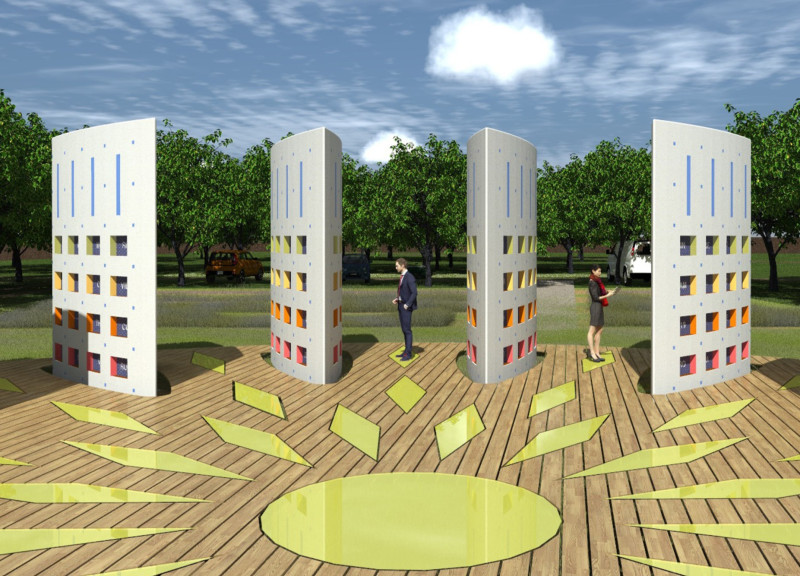5 key facts about this project
The project focuses on changing an uneven landscape in Riga into a defined space that connects with nature. It aims to create a peaceful and thoughtful environment by making careful changes rather than removing existing elements. The design takes inspiration from the artist Richard Long, who emphasizes enhancement without displacement, promoting a relationship with the natural surroundings.
Design Concept
-
The approach begins with the introduction of new trees that give structure to the existing space, forming a clear rectangular green area. This change creates a sense of organization, contrasting with the previous chaos of the landscape. It encourages visitors to engage with nature, emphasizing the importance of the site’s ecological aspects while providing a calming atmosphere.
Functional Elements
-
User needs are met through practical arrangements, including parking located beneath the north-side trees. This choice blends usability with respect for the environment, ensuring that the area remains unobtrusive. Long grass fields, surrounded by wooden elements, provide respectful spaces for the deposition of ashes. This thoughtful integration enhances the project’s role as a memorial site.
Memorial Architecture
-
Central to the design are large stones made from cast concrete, each featuring 16 niches for urns. This arrangement allows for personal memorialization while also reflecting a collective identity. Each niche includes engraved tombstones that connect with individual stories. The circular layout of the stones creates a henge-like formation that fosters a sense of unity and reverence, reminiscent of historic sites such as Stone Henge.
Aesthetic Details
-
A significant feature of the design is a wooden plateau raised above the ground, which includes pieces of yellow glass resembling sunflower petals. This design choice brings an element of brightness and life to the space. The elevated plateau also enhances the visual experience, encouraging visitors to look upward while engaging with themes of memory and nature. Its presence adds a thoughtful layer to the overall design, inviting reflection on both the past and the natural world.






















































